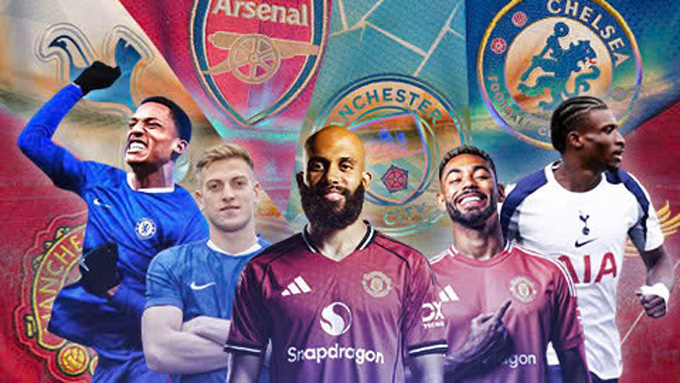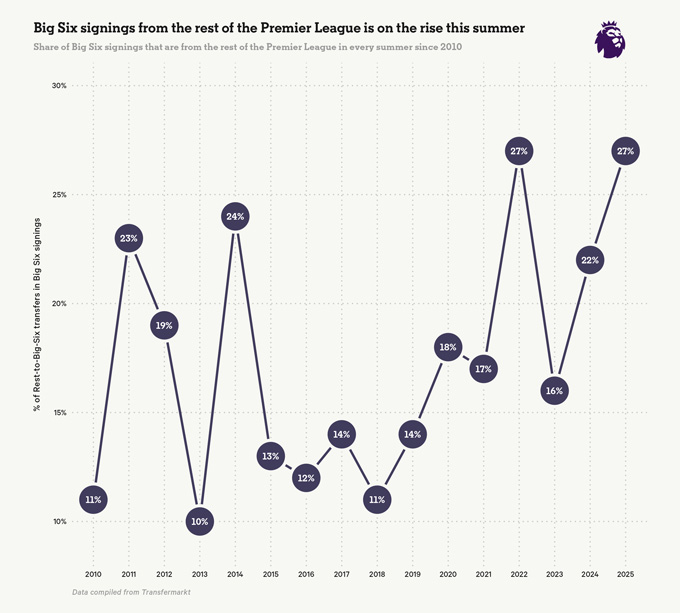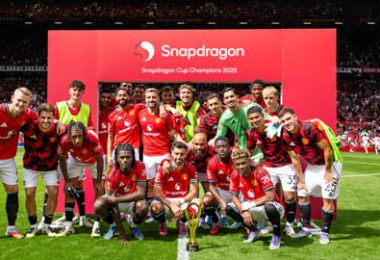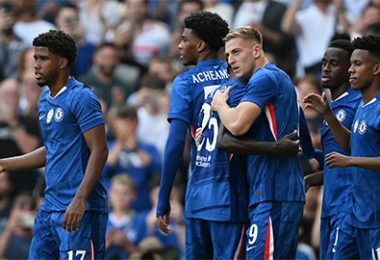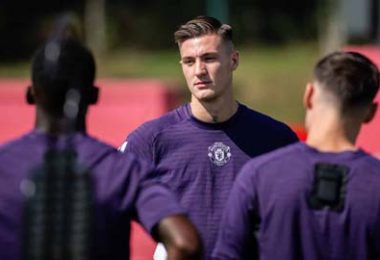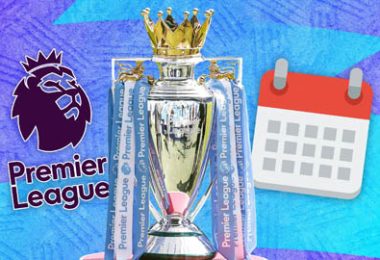If you think the “internal” transfer between the Premier League clubs is increasing, it is easy to understand.
Strange phenomena but not new
This summer, there were quite a few players in the Premier League switched to another club in the same tournament. But the feeling that this trend is increasing is just … hallucinations.
Up to now, such deals account for only 25% of the total number of Premier League rookies (excluding loan contracts) in the happening period – the lowest level in the last 5 summer.
However, the feeling of “increasing” comes from the stature of the contract. Noni Madueke leaves Chelsea to Arsenal, Bryan Mbeumo and Matheus CuHa to join Man United from Brentford and Wolves, while Newcastle recruits Anthony Elanga from Nottingham Forest.
Meanwhile, Tottenham won the signature of the winger Mohammed Kudus from West Ham, Chelsea supplemented Joao Pedro of Brighton and Liam Delap from Ipswich Town.
The deals towards the traditional Big Six group of the Premier League always create the most echo. In addition to the above names, Milos Kerkez, Rayan Ait-Nouri and Christian Norgaard moved to Liverpool, Man City and Arsenal respectively, reinforcing one comment: The rich clubs are “harvesting” talents from the rankings.
Although the percentage of Premier League internal deals has been lower than the average for many years, most of them are the contracts that Big Six takes from the rest of the tournament.
Big Six here has been understood as the richest clubs since 2010: Arsenal, Liverpool, Man United, Chelsea, Man City (after Abu Dhabi United Group took over 2008) and Tottenham (benefited from the Champions League for the first time in 2010).
This summer, 39% of the deals between Premier League clubs are Big Six contracts recruiting players from the rest of the tournament – the highest rate since 2010.
This is not simply because the Big Six group buys more in general.
From 2015 to 2019, Arsenal, MU, Liverpool, Tottenham, Chelsea and Man City mainly hunt for talent from abroad, with the ratio of summer rookie (excluding loan) from the rest of the Premier League has never exceeded 15%.
Businesses such as Kevin de Bruyne, Mohamed Salah, Son Heung-min, William Saliba and Jorginho show the so-called rice bowl. At that time, the potential in European clubs was more attractive than other Big Six teams in the Premier League.
However, in recent years, the Big Six group has gradually paid more attention to the internal contracts of the tournament. This summer, 27% of Big Six's rookie from other group clubs – is also the highest level since 2010.
Where is the cause?
There are two main causes behind this trend.
The first reason: EPPP (Elite Player Performance Plan) – The plan to develop the excellent young player launched in 2012 has helped the training furnaces in the UK produce more quality talents. “We need a significant change. EPPP was born from the context that the English player, and the mature player from our system was not good in technology or tactics like European colleagues.”
The Delap deal from Ipswich to Chelsea followed cases such as Dominic Solanke from Bournemouth to Tottenham (2024) or Declan Rice from West Ham to Arsenal (2023) – domestic players developed finally still back to Big Six.
The second reason: The huge financial potential of the Premier League.
According to UEFA's latest annual financial statements, the total revenue of the Premier League in 2023 reached 7.1 billion euros – nearly equal to the total of La Liga and the Bundesliga combined. This explains why potential players at the Big Six clubs often stay in England, where the richest teams are willing to pay high transfer fees and terrible salaries.
The revenue from television copyright is an important part, with a new 4 -year domestic copyright package (from 2025/26) a total value of 6.7 billion pounds. The skyrocket from 2016 to 2019 (5.1 billion pounds compared to 3 billion pounds in the previous cycle) has helped clubs spend stronger, including other Big Six teams, to buy players from Europe such as Youi Tielemans (from Monaco to Leicester in 2019) or Amadou Onana (from Lille to Everton in 2022).
In the period of 2016 to 2018, the rate of rookies from outside the United Kingdom of England & Ireland from Big Six clubs reached 51%, then decreased to 46% (2019 to 2022) and increased 51% in the 2022 to 2025 cycle.
Since 2016, France has led the number of players to the Premier League (72 people), followed by Spain (60), Germany (59) and Italy (43). Notably, they are not only found in the lower ranks but mainly taken directly from the top leagues in Europe.
Some examples: Wolves borrowed Matheus Cunha from Atletico with the obligation to buy in the summer of 2023, then sold it to MU in June 2025; Brighton bought Marc Cucurella from Getafe in 2021 and Chelsea bought it in 2022.
Clubs with the lowest average age when buying players since 2016 are Brighton and Brentford – the model “Buy children, sell high prices”. Brighton has Joao Pedro, Cucurella, Yves Bissouma, Moises Caiucedo, Alexis Mac Allister, and Brentford has David Raya and Mbeumo.
According to the purchase rate from abroad, Brighton ranked third (74%), after Leeds (75%) and Wolves (81%). Wolves especially focused on the Portuguese market since promotion to the Premier League in 2018.
Many players joining these teams are given the terms that allow Big Six to buy back at a certain price. With financial potential, Big Six easily pays that fee instead of looking for a cheaper option in the market that has not been exploited, accepting “Premier League Premium” to get players who have proven their ability and integrate into life in the UK.
MU's coach Ruben Amorim once said: “You see Matheus Cunha play every weekend the opponents you will meet and that helps you be more sure in choosing a player.”
The development of English football institutes, plus the clubs outside Big Six attracted international talents, turned the Premier League into the perfect “market” for the richest club group.
Summer 2025 is the “harvest” in the Premier League.


